Algae Oil: Modern Marine-Based Cooking Oil for Asian Cuisine
Algae Oil for WOK: Cooking Oil for Asian Cuisine
A comprehensive guide to the sustainable, high-performance cooking oil revolutionizing Asian culinary applications
Algae oil represents a remarkable convergence of ancient marine traditions and modern sustainable technology, offering Asian cooking enthusiasts a premium cooking medium that excels in high-heat applications while providing exceptional nutritional benefits. This comprehensive guide explores algae oil's properties, production methods, and specific applications in traditional Asian cooking techniques.
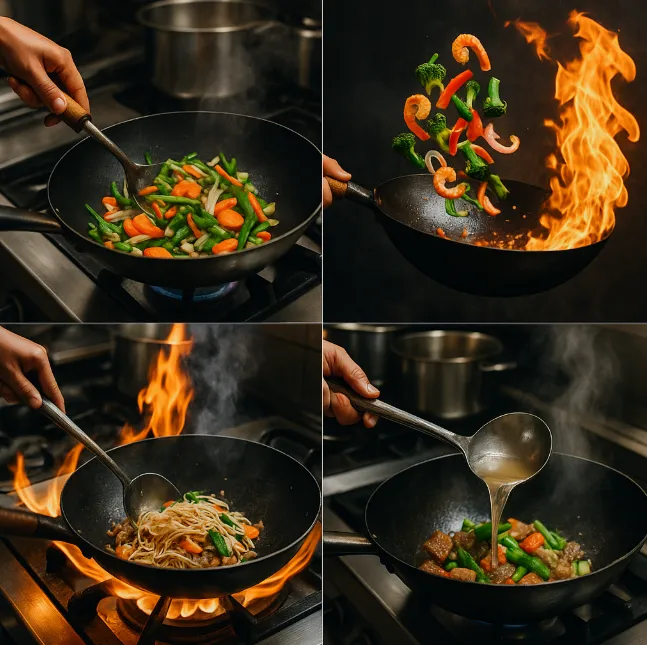
What is Algae Oil?
Algae oil, also known as algal oil or microalgae oil, is extracted from various species of marine microorganisms, primarily Schizochytrium and Crypthecodinium cohnii. Unlike traditional plant-based oils derived from seeds, nuts, or fruits, algae oil originates from the same marine organisms that form the foundation of the ocean's food chain—the same organisms that provide omega-3 fatty acids to fish.
Cultural Note: Marine-based cooking fats have deep historical roots in Asian coastal cuisine. Traditional Japanese cooking utilized whale oil and fish oils, while Chinese coastal regions employed various marine-derived cooking mediums long before the widespread adoption of plant oils. As we explored in The Complete History of the Wok: From Ancient China to Global Kitchens, cooking oil evolution paralleled the development of wok techniques across Asian cultures.
The Science Behind Algae Oil Production
Modern algae oil production employs controlled fermentation processes where specific algae strains are cultivated in sterile environments. These microorganisms naturally produce high concentrations of beneficial fatty acids, particularly DHA (docosahexaenoic acid) and EPA (eicosapentaenoic acid), which are then extracted through mechanical pressing or solvent extraction methods.
The resulting oil possesses unique characteristics that make it exceptionally well-suited for Asian cooking applications:
- Neutral flavor profile that doesn't interfere with delicate Asian seasonings
- High smoke point suitable for wok hei and high-heat techniques
- Exceptional oxidative stability preventing rancidity during storage
- Rich omega-3 content providing nutritional benefits often lacking in traditional cooking oils
Smoke Point and High-Heat Performance
For Asian cooking techniques, particularly those requiring intense heat like proper wok stir-frying, smoke point represents the critical performance metric. Algae oil's smoke point typically ranges from 485°F to 510°F (252°C to 266°C), placing it in the premium high-heat cooking oil category alongside avocado oil and refined coconut oil.
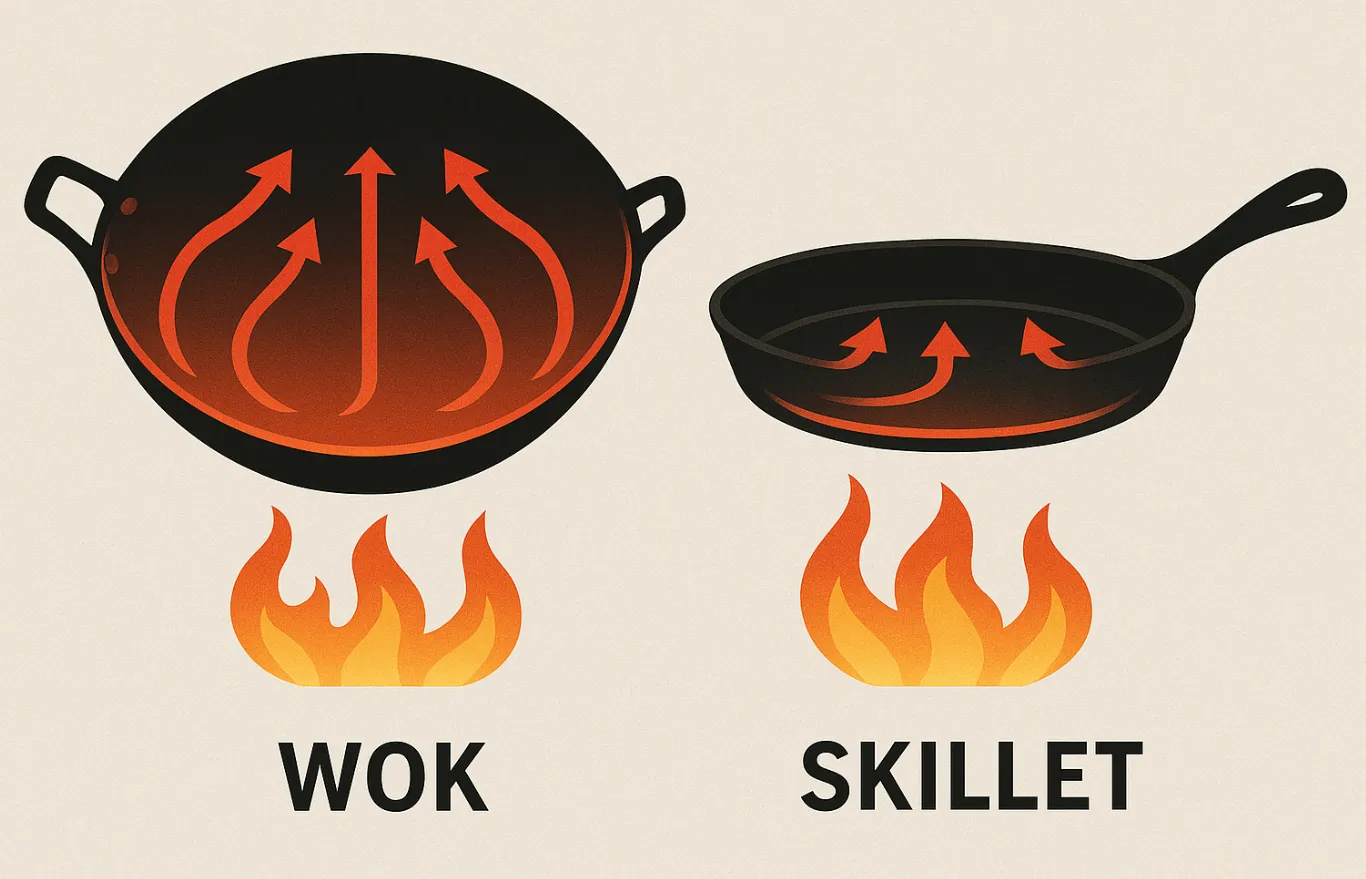
Smoke Point Science: When cooking oils exceed their smoke point, they begin breaking down into harmful compounds including aldehydes and free radicals. The thermal degradation also produces bitter flavors that can overwhelm delicate Asian seasonings. Algae oil's molecular structure, rich in stable fatty acids, resists this breakdown even under extreme wok conditions.
Comparison with Traditional Asian Cooking Oils
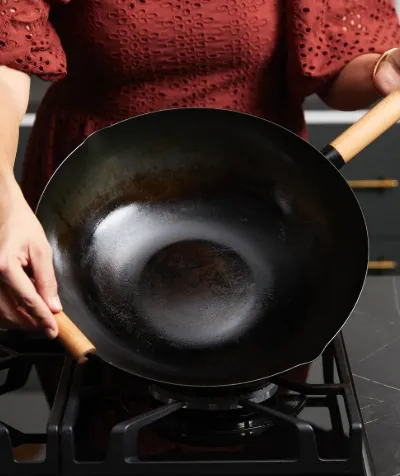
| Oil Type | Smoke Point (°F / °C) | Traditional Use |
|---|---|---|
| Algae Oil (max reported) | ~535 °F / 280 °C | Modern applications |
| Algae Oil (common range) | 485–510 °F / 252–266 °C | Modern applications |
| Soybean Oil – Refined | ~460 °F / 238 °C | General Asian cooking |
| Peanut Oil – Refined | ~450 °F / 232 °C | Chinese stir-frying |
| Sesame Oil – Semi-refined | ~450 °F / 232 °C | Stir-frying |
| Rapeseed Oil – Unrefined (upper range) | ~450 °F / 232 °C | Low-heat cooking, cold dishes |
| Rapeseed Oil – Refined (Canola) | ~400 °F / 204 °C | Northern Chinese cuisine |
| Lard | ~374 °F / 190 °C | Traditional Chinese cooking |
| Sesame Oil – Unrefined (toasted) | ~350 °F / 177 °C | Flavoring, finishing oil |
| Peanut Oil – Unrefined | ~320 °F / 160 °C | Light sautéing, salad dressings |
Buying Reality: While algae oil commands premium pricing compared to conventional cooking oils, its performance characteristics and nutritional profile justify the investment for serious Asian cooking applications, particularly when achieving authentic wok hei requires sustained high-heat cooking.
Applications in Traditional Asian Cooking Methods
Wok Stir-Frying and Wok Hei Achievement
The pursuit of wok hei—the distinctive "breath of the wok" flavor achieved through extremely high-heat cooking—demands oils capable of withstanding temperatures exceeding 500°F without breaking down. Algae oil's thermal stability makes it ideally suited for this most fundamental of Asian cooking techniques.
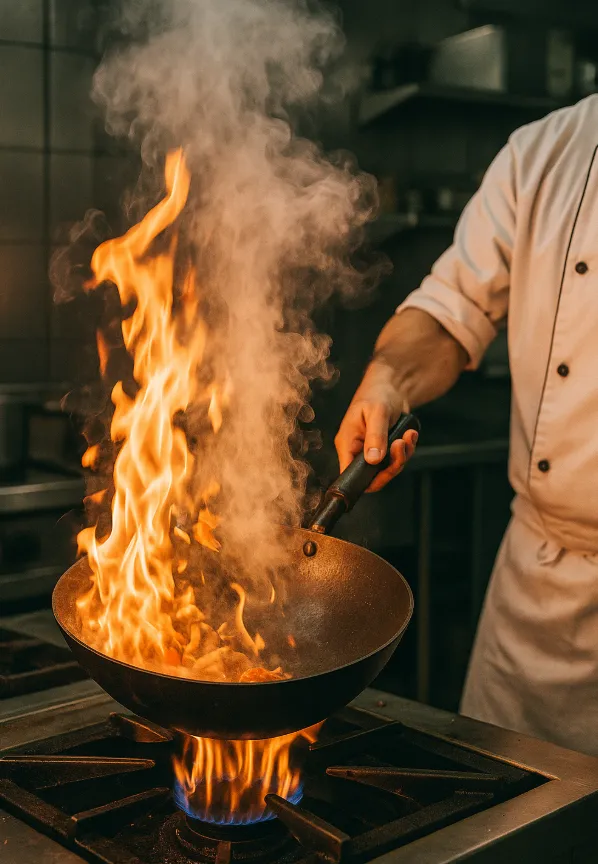
Understanding wok hei requires mastering the complete wok cooking methodology, where oil selection plays a crucial role in achieving authentic results. When employing algae oil for wok stir-frying:
- Preheating Phase: Heat the properly seasoned wok until smoking, then add algae oil
- Aromatics Stage: The oil's neutral profile allows ginger, garlic, and scallions to express their full aromatic potential
- Protein Searing: High smoke point enables proper Maillard reaction development
- Vegetable Integration: Maintains oil integrity throughout the rapid cooking process
- Sauce Integration: Thermal stability prevents oil breakdown when deglazing with soy sauce or rice wine
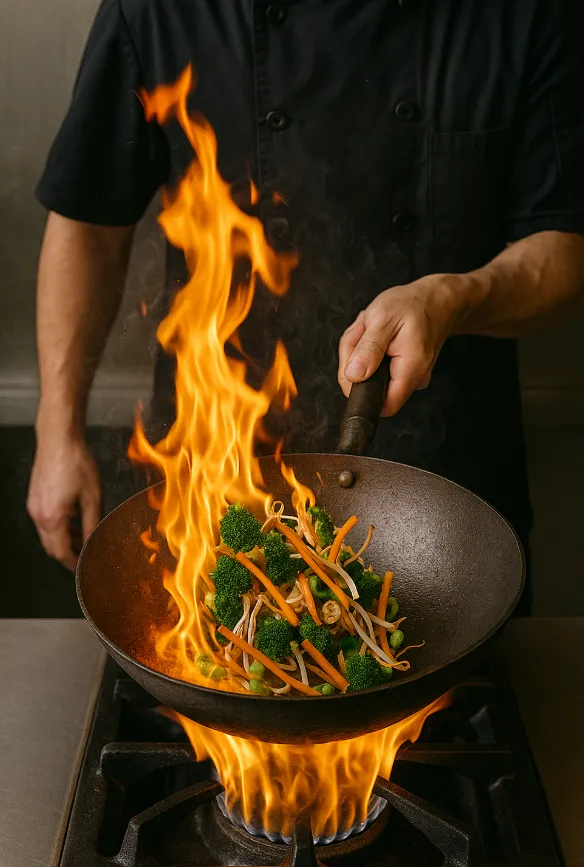
Deep-Frying Applications
Asian cuisine extensively employs deep-frying techniques, from Japanese tempura to Chinese spring rolls. Algae oil's oxidative stability makes it exceptional for these applications, maintaining quality through multiple uses without developing off-flavors.
Traditional Deep-Frying Applications:
- Tempura: Oil's neutral flavor preserves delicate seafood and vegetable tastes
- Chinese Fried Rice: High heat tolerance for proper rice texture development
- Korean Fried Chicken: Sustained temperature maintenance for crispy exterior development
- Vietnamese Spring Rolls: Clean flavor profile that doesn't overwhelm fresh herbs
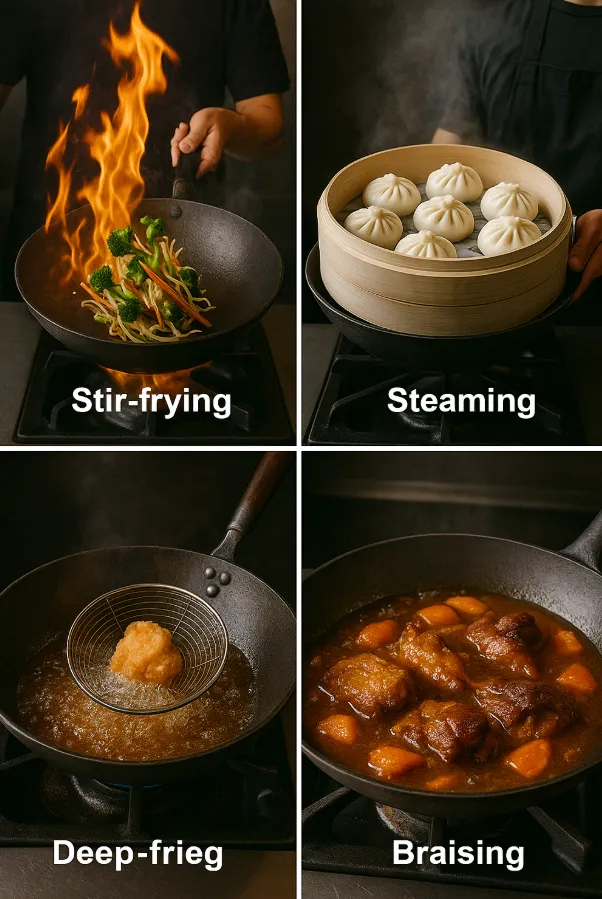
Steaming and Indirect Heat Applications
While less obvious, algae oil serves excellently in Asian steaming applications where oil contact occurs through marinades or as finishing touches. Its omega-3 content provides nutritional enhancement without compromising traditional flavors.
Nutritional Profile and Health Considerations
Algae oil distinguishes itself nutritionally through its marine-derived omega-3 fatty acid profile, particularly its high concentration of DHA (docosahexaenoic acid). This positions it as the only plant-based oil providing the same omega-3 benefits traditionally associated with fish consumption.
Omega-3 Fatty Acid Content
Typical Algae Oil Composition:
- DHA: 35-40% of total fatty acids
- EPA: 5-10% of total fatty acids (variety dependent)
- Monounsaturated fats: 25-30%
- Saturated fats: 15-20%
Cultural Health Note: Traditional Asian diets historically obtained omega-3 fatty acids through marine sources—fish, seaweed, and coastal foraging. Algae oil provides these benefits for modern diets that may lack sufficient marine food sources, while supporting traditional cooking methods documented in our Asian trade routes and culinary evolution research.

Stability and Storage Characteristics
Algae oil's natural antioxidant content, primarily tocopherols (vitamin E compounds), provides exceptional storage stability compared to other omega-3 rich oils like flaxseed or walnut oil. Proper storage maintains quality for 18-24 months, significantly longer than most specialty cooking oils.
Storage Recommendations:
- Cool, dark storage away from heat sources
- Tightly sealed containers to prevent oxidation
- Refrigeration optional but extends shelf life
- Use within 6 months of opening for optimal flavor
Sustainability and Environmental Impact
The environmental profile of algae oil aligns with growing consciousness about sustainable cooking practices. Unlike terrestrial crop oils requiring extensive land use, algae cultivation occurs in controlled environments with minimal resource consumption.
Environmental Advantages:
- Land Use: No agricultural land competition with food crops
- Water Consumption: Controlled cultivation systems minimize water waste
- Carbon Footprint: Algae naturally sequester carbon during growth
- Marine Impact: Production doesn't deplete wild fish populations for omega-3 sources
Sustainability Science: Algae oil production requires approximately 98% less land than terrestrial oil crops while producing equivalent volumes. This efficiency particularly benefits regions with limited agricultural capacity, supporting local food security.
Regional Asian Cooking Considerations
Different Asian culinary traditions present unique requirements for cooking oils, and algae oil's versatility accommodates most regional preferences while providing consistent performance characteristics.
Chinese Cuisine Applications
Chinese cooking's emphasis on high-heat techniques and flavor preservation makes algae oil particularly well-suited for:
- Cantonese Stir-Frying: Clean flavor allows subtle Cantonese seasonings to predominate
- Sichuan Cuisine: Heat stability withstands intense chili oil preparation
- Dim Sum Preparation: Neutral profile supports delicate dumpling and bao preparations
Japanese Culinary Integration
Japanese cooking's emphasis on ingredient purity and subtle flavors aligns perfectly with algae oil's characteristics, particularly in the context of Japanese chukanabe cooking techniques:
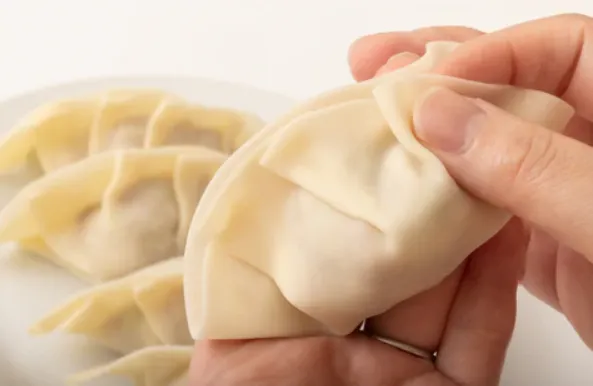
- Tempura Mastery: Exceptional clarity and neutral taste
- Chukanabe Cooking: Supports Japanese-Chinese fusion techniques requiring sustained high heat
- Yakitori Applications: Clean burning properties for grilling applications
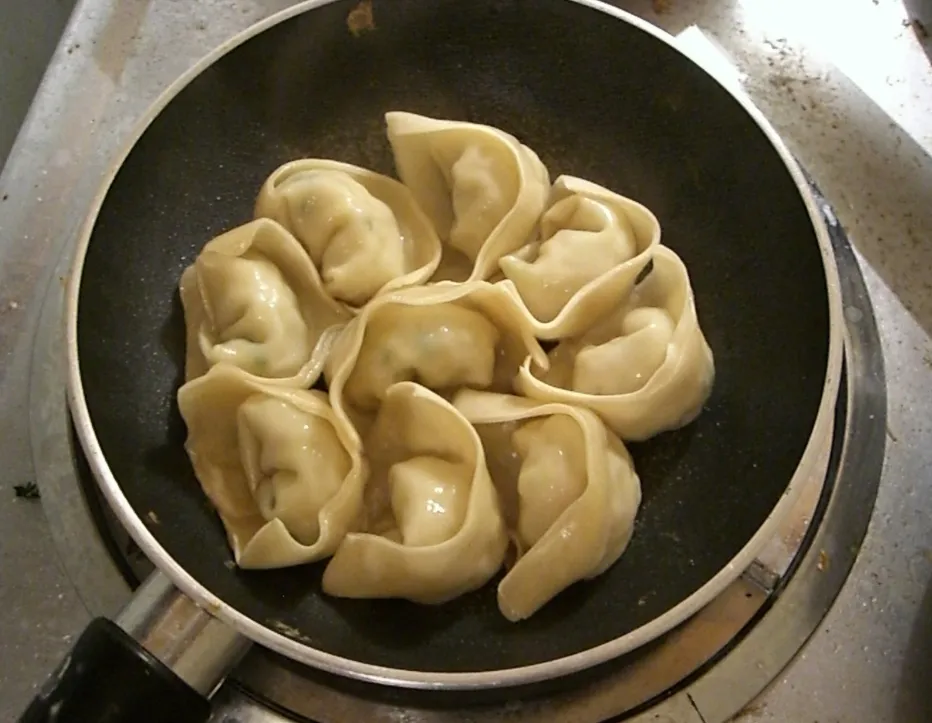
Korean Cooking Applications
Korean cuisine's bold flavors and varied cooking methods benefit from algae oil's versatility:
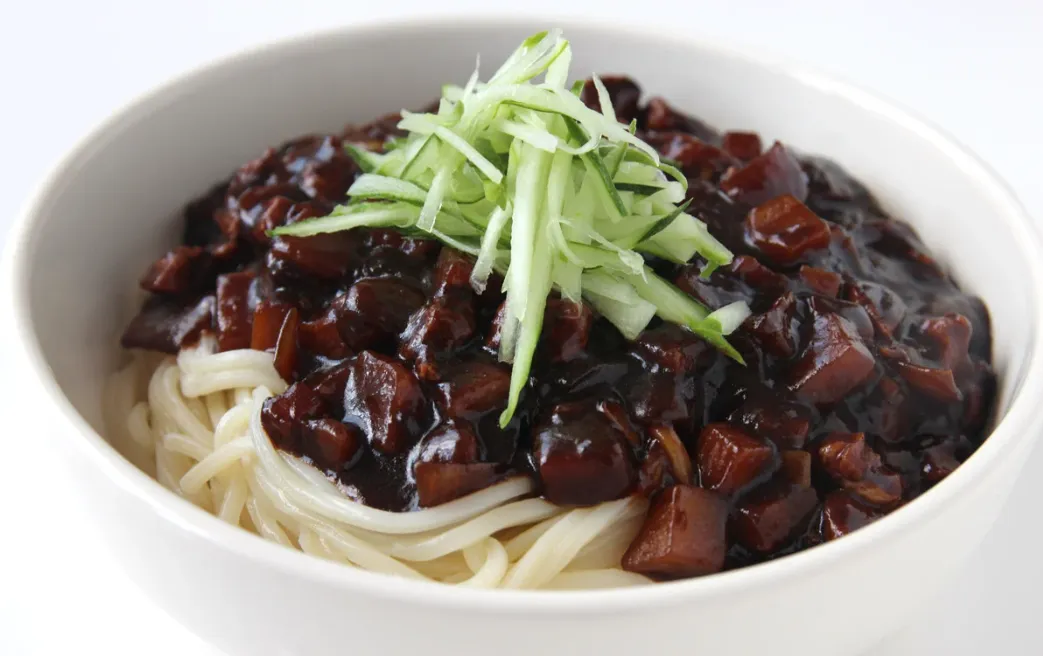
- Bulgogi Preparation: High-heat searing without flavor interference
- Kimchi Stir-Frying: Heat stability during intense fermented vegetable cooking
- Korean Fried Preparations: Multiple-use stability for repeated frying
Southeast Asian Adaptations
The complex spice profiles of Thai, Vietnamese, and Malaysian cuisines require oils that support rather than compete with intense aromatics:

- Thai Stir-Frying: Maintains integrity during high-heat herb and spice cooking
- Vietnamese Pho Preparation: Clean profile for delicate broth applications
- Malaysian Rendang: Sustained cooking stability for slow-braised applications
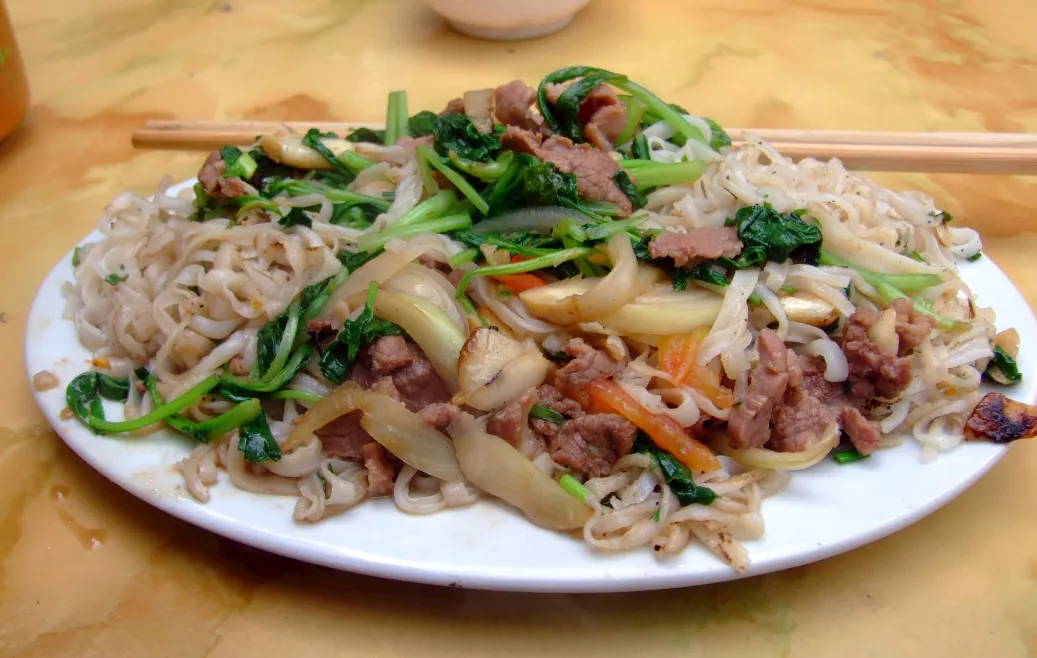
Equipment Considerations for Algae Oil Use
The choice of cooking equipment significantly impacts algae oil performance. Our comprehensive wok buying guide covers essential equipment considerations, but algae oil works optimally with:
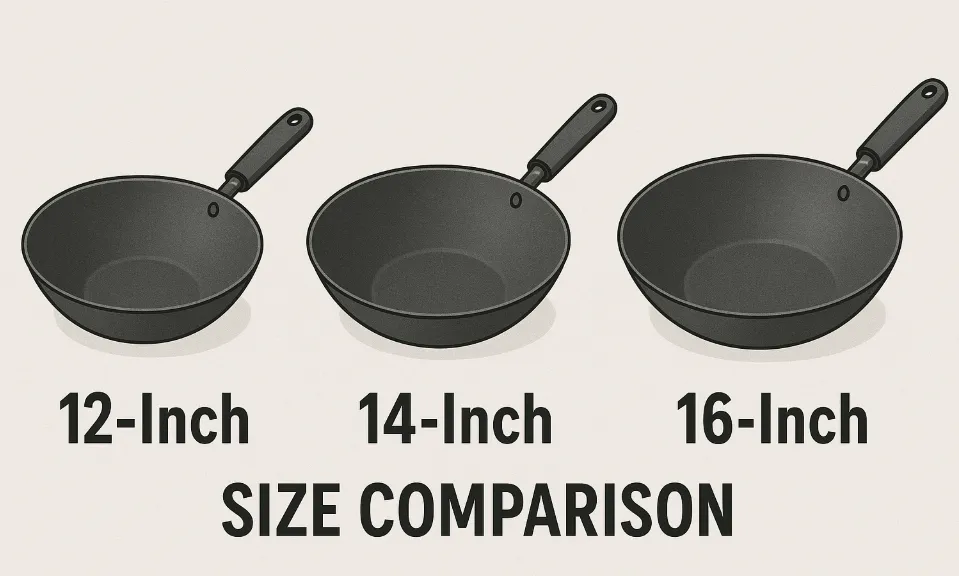
Optimal Wok Materials:
- Carbon Steel: Provides even heat distribution maximizing algae oil's thermal stability
- Cast Iron: Excellent heat retention supporting sustained high-temperature cooking
- Avoid Non-Stick: High temperatures can damage coatings, negating algae oil's heat advantages
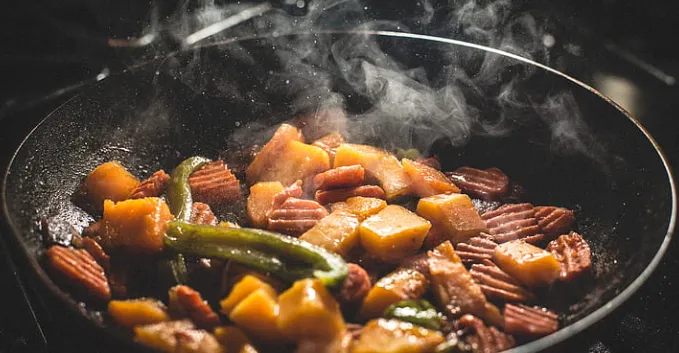
Heat Source Compatibility: Understanding proper wok setup for home kitchens ensures optimal algae oil performance across different cooking environments.
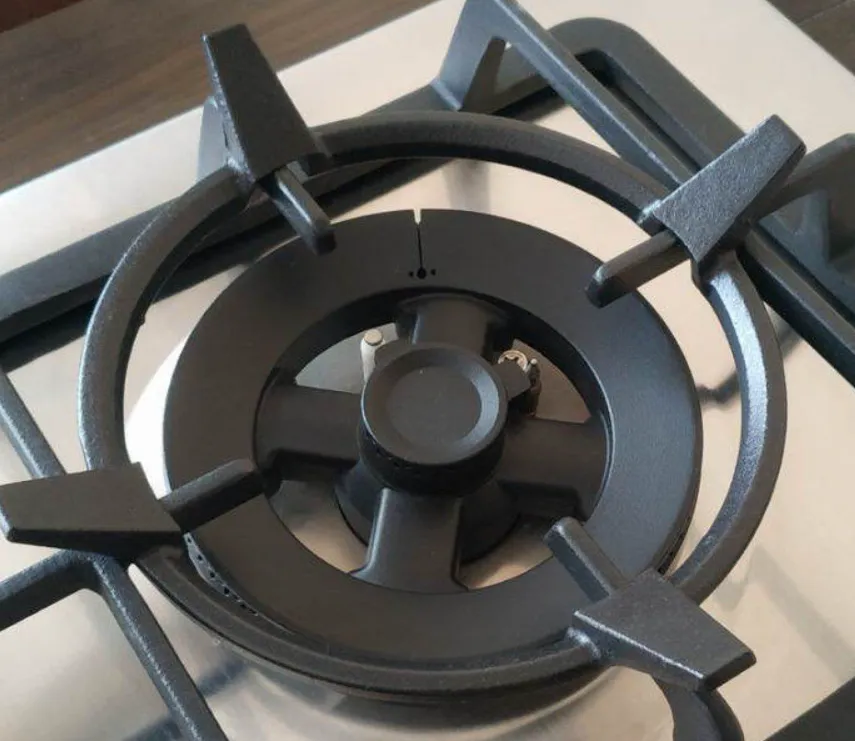
Cost Analysis and Market Positioning
Algae oil commands premium pricing within the specialty cooking oil market, typically ranging from $15-25 per 16-ounce bottle. While significantly more expensive than conventional cooking oils, its performance characteristics and nutritional profile justify the investment for specific applications.
Price Comparison Analysis:
- Volume Economics: Small quantities needed due to high smoke point efficiency
- Multi-Use Capability: Deep-frying applications maintain oil quality through multiple uses
- Health Benefits: Omega-3 content provides nutritional value beyond basic cooking function
- Performance Premium: Professional-grade results justify cost for serious home cooks
Buying Reality: Consider algae oil as a specialized tool rather than everyday cooking oil. Reserve for applications requiring maximum performance—high-heat stir-frying, premium deep-frying, or dishes where omega-3 enhancement provides specific benefits.
Practical Purchasing and Usage Guidelines
Selection Criteria
When selecting algae oil for Asian cooking applications, prioritize:
- Source Transparency: Reputable manufacturers providing algae strain information
- Processing Methods: Cold-pressed or mechanical extraction preferred over chemical processing
- Packaging Quality: Dark glass containers protecting against light degradation
- Certification Standards: Third-party testing for purity and potency verification
Integration Strategies
Gradual Integration Approach:
- Begin with high-heat applications where performance differences are most noticeable
- Use for premium preparations requiring optimal results
- Gradually expand usage based on cooking frequency and budget considerations
- Maintain traditional oils for applications where algae oil provides no specific advantage
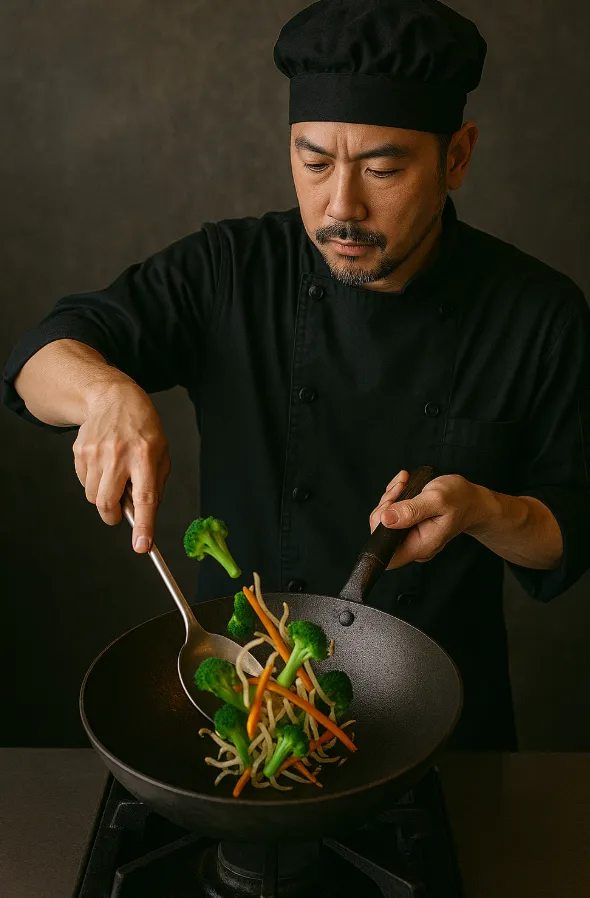
Professional Kitchen Applications
Restaurant and serious home kitchen integration requires understanding algae oil's optimal use cases, building on the foundation established in our comprehensive wok technique guide:
Recommended Applications:
- Wok stations requiring consistent high-heat performance
- Premium menu items justifying ingredient cost premiums
- Health-conscious menu offerings emphasizing omega-3 content
- Specialty preparations where flavor neutrality is essential
Cost Management:
- Reserve for applications maximizing unique properties
- Blend with traditional oils for volume applications requiring some premium characteristics
- Use smaller quantities leveraging high-efficiency performance
Scientific Research and Future Developments
Ongoing research into algae oil production continues improving yield efficiency and reducing production costs. Current developments focus on:
- Strain Optimization: Developing algae varieties with enhanced oil content and improved fatty acid profiles
- Production Scaling: Industrial fermentation improvements reducing per-unit costs
- Quality Enhancement: Processing refinements maintaining maximum nutritional content while improving cooking performance
Research Directions: Future algae oil development aims to achieve cost parity with premium conventional cooking oils while maintaining superior performance characteristics. Advances in controlled cultivation and extraction techniques continue improving both economic and environmental sustainability.
Maintenance and Care Integration
Proper wok seasoning and maintenance becomes even more critical when using premium oils like algae oil. The oil's stability can actually enhance seasoning development:
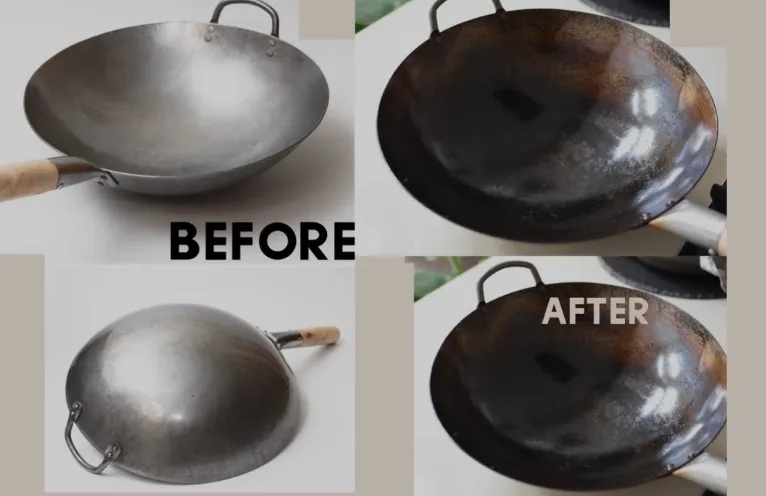
Seasoning Benefits:
- Algae oil's high smoke point supports effective polymerization
- Omega-3 content may enhance protective layer development
- Stability reduces rancidity concerns during seasoning storage
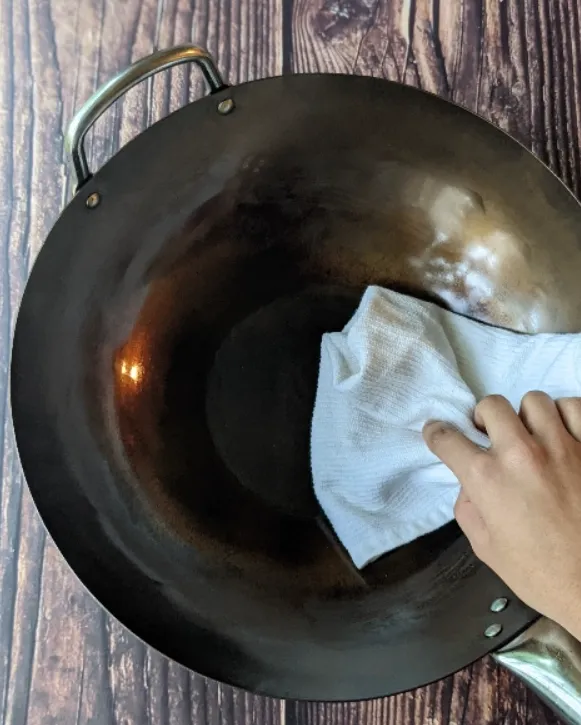
Conclusion
Algae oil represents a significant advancement in cooking oil technology, particularly for Asian culinary applications requiring high-heat performance and clean flavor profiles. While premium pricing limits everyday use, its exceptional characteristics make it invaluable for serious cooks pursuing authentic Asian cooking techniques.
The convergence of sustainability, nutritional benefits, and superior cooking performance positions algae oil as the optimal choice for applications where conventional oils fall short. As production scaling continues reducing costs, algae oil will likely become increasingly accessible to home cooks seeking professional-grade results in their Asian cooking endeavors.
For practitioners of traditional Asian cooking techniques, particularly those pursuing the elusive wok hei or executing delicate preparations requiring neutral oil characteristics, algae oil provides unmatched performance justifying its premium positioning in the modern cooking oil landscape.
Final Recommendation: Integrate algae oil selectively, focusing on applications where its unique properties provide clear advantages. As your technique develops and appreciation for subtle performance differences grows, algae oil's role in your Asian cooking arsenal will naturally expand to match your advancing culinary ambitions.
This comprehensive guide provides the foundation for understanding algae oil's role in Asian cuisine. For specific technique applications and detailed cooking instructions, refer to our comprehensive wok cooking series and specialized technique guides.
Comments
Post a Comment